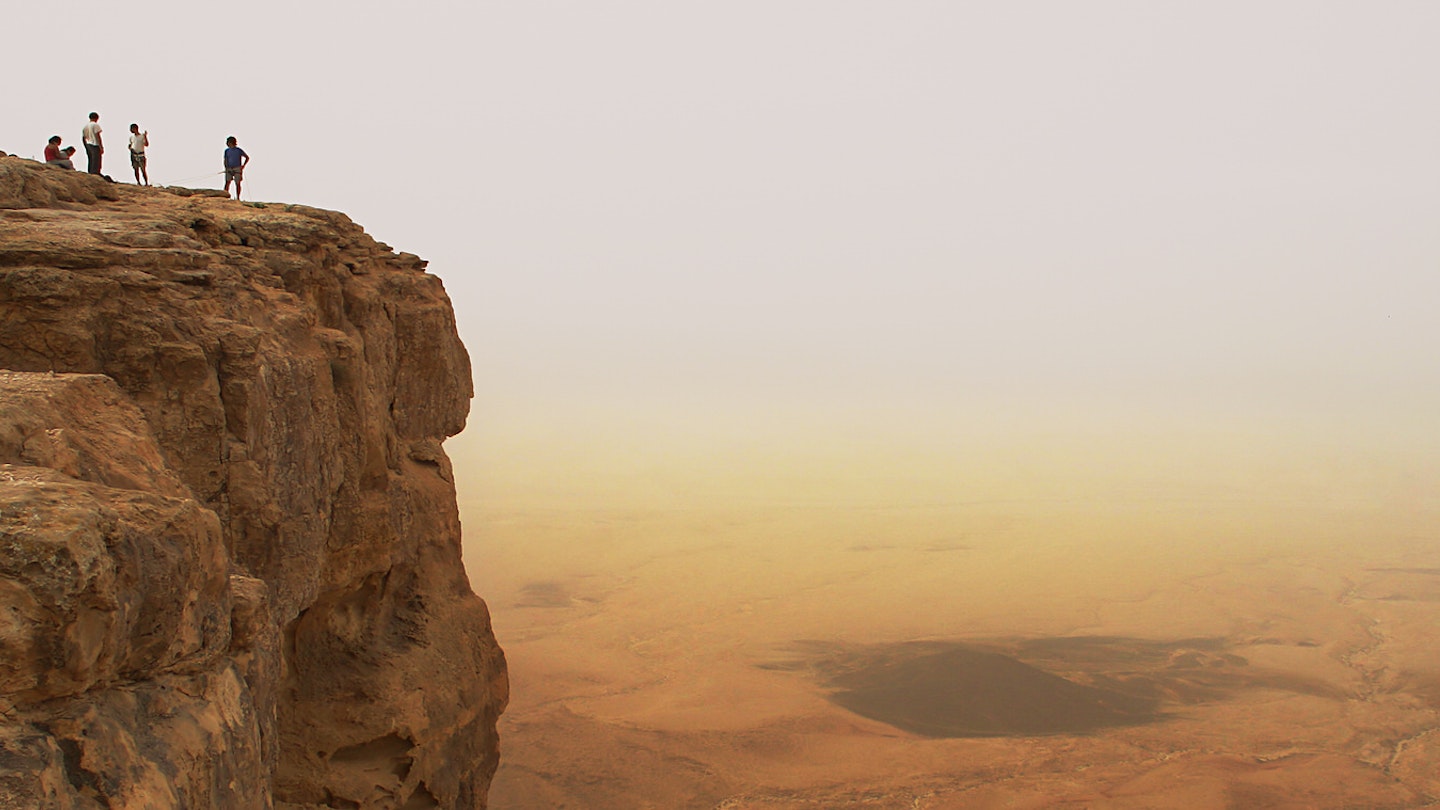Explore the Wonders of the Negev Desert in Israel
Covering more than half of Israel, the Negev desert is a vast, diverse landscape that’s far from empty. Scattered across the colorful plains, mountains, and valleys, a growing number of farms, guesthouses, and outdoor activities allow visitors to get better acquainted with the land and people of the desert.
From cheese-tasting to sandboarding, and walking among ancient ruins, there are plenty of opportunities for travelers to indulge in the wonders of this arid landscape.
Stargaze and Savor the Awe of the Desert at the Ramon Crater
When night falls, the skies just outside the desert town of Mitzpe Ramon are some of the best in the world for observing the night sky due to its remote location. Make your way to the edge of the Ramon Crater, also known as Israel’s Grand Canyon, and you will be enveloped in a sea of stars. Thanks to low humidity, high altitude, and minimal artificial light, the clear sky sparkles with stars almost every night of the year. To learn more about the heavens or peer at them through telescopes, Ira Machefsky is one of the area’s popular intergalactic guides. Machefsky, a retired high-tech professional and an amateur astronomer for more than 50 years, finds joy in showing visitors the celestial wonders. The blanket of stars at night makes you acutely aware of the Negev’s vastness and extreme natural environment.
Capture the Essence of the Negev at Desert Daughter
Inside a simple metal building off a bumpy dirt road are tables covered with handmade soaps and glass jars of body lotion. These beauty products are made from local desert herbs and camel milk, which generations of Bedouin have relied on for their healing properties, explains Mariam Abu Rkeek, founder of Desert Daughter. In addition to selling these products, Desert Daughter’s visitor center offers soap- and lotion-making workshops, as well as pita-baking classes. Visit in the morning to be treated to a typical Bedouin breakfast—a spread of freshly baked pita, goat yogurts and cheeses, along with olive oil and vegetables.
Step into the Past in the Desert’s Ancient Villages
The ruins of the village of Shivta rising on the desert horizon are just as unexpected today as they were more than a century ago when the first foreign explorers traversed the Negev. At Shivta National Park, visitors can walk among the remnants of church naves and a mosque, and stroll down alleyways lined with stone houses and water-collection pools. It is quite fascinating to realize that this was a thriving place so long ago, despite the harsh weather conditions and isolated location. In addition to being a UNESCO-protected national park, Shivta, along with the nearby villages of Avdat and Nitzana, continues to be an active archaeological site, where scholars are trying to discover why the area was abandoned in the 7th century. Shivta also features the Shivta Farm guesthouse, in the restored stone residence built by American archaeologist Harris D Colt in the 1930s, providing a cozy stop for travelers seeking a home-cooked meal or refreshing drink.
Feel the Thrill of the Negev While Sandboarding
Between where the ruins of Shivta and Nitzana emerge from the desert is the perfect spot to surf the sand dunes. Just off Road 211, two ridges, shaped by winds carrying sand from the Sahara, tower over the small outpost of Dror BaMidbar, one of three outfits offering sandboarding in this area. The tall dune typically reaches about 35m in winter but decreases by 10m or so in summer when winds are less vigorous. Anyone can make their way up the dunes with a brightly colored sandboard, then slide down on their belly, back, or standing up. While descending is exhilarating, the trek back up reminds you of how challenging it can be to traverse this terrain, as ancient explorers and Bedouin have done for centuries: your feet sink into the sand, the wind whips sand into your mouth, and the sun beats down relentlessly. In addition to sandboarding, visitors can learn to build sand sculptures, enjoy falafel from a food truck, or simply relax in the shade, soaking in the mesmerizing desert views.
Get in Touch with the Land on a Desert Family Farm
One of the most surprising aspects of the Negev is the abundance of farms and vineyards. Despite sandy soil and low rainfall, devoted farmers cultivate olives and grapes and raise herds of sheep and goats. Utilizing drip irrigation and enriching the soil with olive and grape waste, the Kashkash family welcomes visitors to explore their Carmei Har HaNegev Farm, including their olive oil factory. Farmer Yossi Kashkash points out the ruins of ancient stone buildings on his property, explaining their connection to the Nabataean and Byzantine communities that cultivated these lands over 1500 years ago. The farm also features an olive oil factory and a tasting room where visitors can sample various locally-made oils.
Further up Route 40, the Nahimov family offers tours of their Naot Farm, situated among rolling brown hills overlooking the Beer-Hail creek, which flows with water after infrequent winter rains. Visitors can wander among enclosures housing baby goats and their milking mothers, and meet the farm’s cheesemakers discussing the numerous varieties available for sampling in the farm shop, showcasing a bounty of salty feta, sticky halloumi, and aged French-style Tomme cheeses. If you wish to extend your stay, the Naot Farm recently opened a unique guesthouse built from massive concrete tubes that originally served as part of the national water pipe infrastructure.





